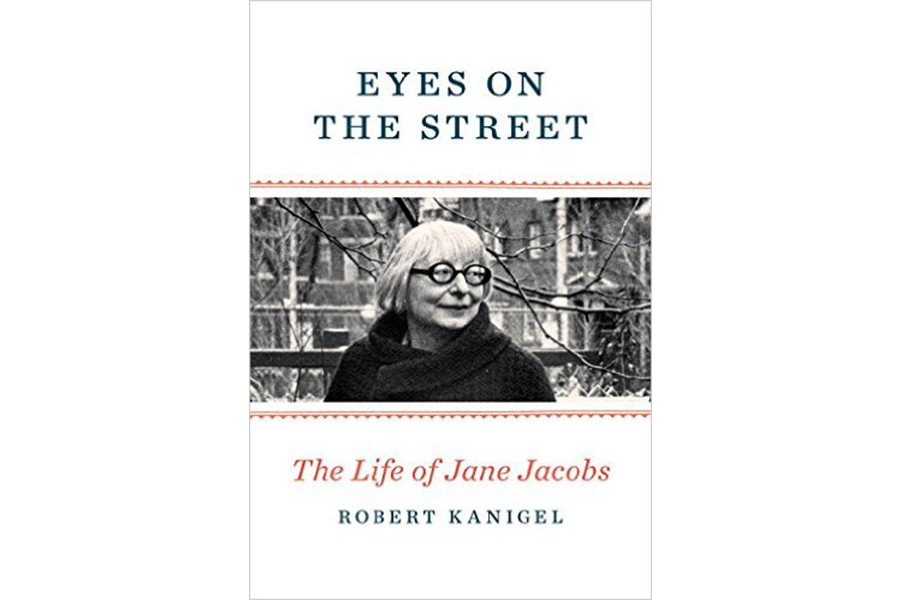'Eyes on the Street' celebrates 'distinctly modest' urban legend Jane Jacobs
Loading...
Sometimes it takes a bolt of insight for a superhero to summon the power within. For Jane Jacobs, the ubiquitous urbanist, that moment of clarity flashed through her mind in the streets of Philadelphia.
It was 1955, when Jacobs spent her days writing glowingly about redevelopment and hospital construction for a glossy architecture magazine. She dropped by Philly to bask in the glow of its planning commission director, a rising star of urban renewal. They went on a tour and visited a rehabbed neighborhood. It was shiny, nice and new, devoid of inner-city dirt and chaos, but only Jacobs spotted the elephant that wasn’t in the room: people.
“She saw one little boy – she’d remember him all her life – kicking a tire. Just him, alone on the deserted street,” writes author Robert Kanigel in his fond and perceptive new biography of Jacobs.
Where was everybody? She asked the planning chief. In her telling, this know-it-all icon of urban planning, this grand poobah of city-fixing, didn’t know. Even worse, he didn’t care.
His nonchalance helped set a revolution in motion, all thanks to a woman who – like many a crusader, caped and otherwise – hid a will of steel under a mild-mannered exterior.
As an author, Kanigel has tackled a wide range of topics from leather to Irish islands to the French Rivera. His 1991 book about the Hindu mathematics genius Ramanujan, “The Man Who Knew Infinity,” became an arthouse movie this year starring Dev Patel and Jeremy Irons.
But as he notes, Kanigel faces an unusual challenge in Eyes on the Street: The Life of Jane Jacobs. His subject doesn’t follow the path of the typical “great man,” as Kanigel puts it, in which an early life’s every twist and turn – think Churchill, Gandhi or Lincoln – seems to reveal something momentous. Jacobs, in contrast, lives a “distinctly modest,” not very ambitious life until she explodes into the public eye in middle age thanks to her 1961 masterpiece “The Death and Life of Great American Cities.”
Kanigel uncovers the values that her family promotes as she grows up in Scranton, Pa.: “a sense that life was too good, too interesting, to waste on wayward fits of ignorance and pettiness.”
The Girl Scouts, meanwhile, teach her that girls and women could do anything. Her own outlaw behavior – she gets expelled from third grade – convinces her that those in charge aren’t always those in the right. And her desire for something other than a white picket fence lands her in the Big Apple.
It’s there that she develops her famous critique of 1950s-style urban renewal: It evicts the city-ness of cities in favor of humanity-free zones of colorless order.
Jacobs isn’t exactly a powerhouse in person. Her appearance is said to be “handsome,” an unfortunate adjective for a woman. Despite a healthy sense of humor, she’s ungifted with TV talk show-style gab. Then there’s the matter of her gender, which offends her critics and even flummoxes fans who call her “motherly.”
All she has are words, not so much jotted off as flung at the objects of her scorn, like the urban renewal projects boasting “all the attributes of a well-kept dignified cemetery.” Well, she has words and one more thing: an in-born inability to sit down and shut up.
Just ask Robert “Master Builder” Moses, who made the mistake of tangling with Jacobs. Or other gobsmacked politicians, planners, and developers in New York and in Toronto, where she spend the last decades of her life.
Was she just a gadfly? Far from it. Thanks to her books and articles, her influence is international, and her legacy spans the world.
Here in the US, we can see Jacobs in the questions we ask as we remake old neighborhoods and create new ones.
What price do we pay by bulldozing – or gentrifying – the past? (Some blame Jacobs herself for the menace they see in gentrification.) What should we make of the comfy porches and friendly walkability of upscale New Urbanism communities? (Jacobs feared they were harbingers of creeping suburbanism.) Must the car always be king, hooking us on what she called an “Expressway Drug” even as climate change threatens us all?
And then there are the questions that Jacobs sometimes neglected: How do crime, race and segregation fit in? As Kanigel notes, her best-known opus seems to focus more on lessons learned from ordinary people than on the people themselves.
Today, another girl may be incubating in an iconoclastic family somewhere, encouraged to resist anyone whose powers aren’t principled. Maybe she’ll grow up to challenge someone whose words have become holy writ. A person, perhaps, like Jane Jacobs.
But this urban icon, with her superpowers of grit, generosity and genius, will be anything but an easy target.








